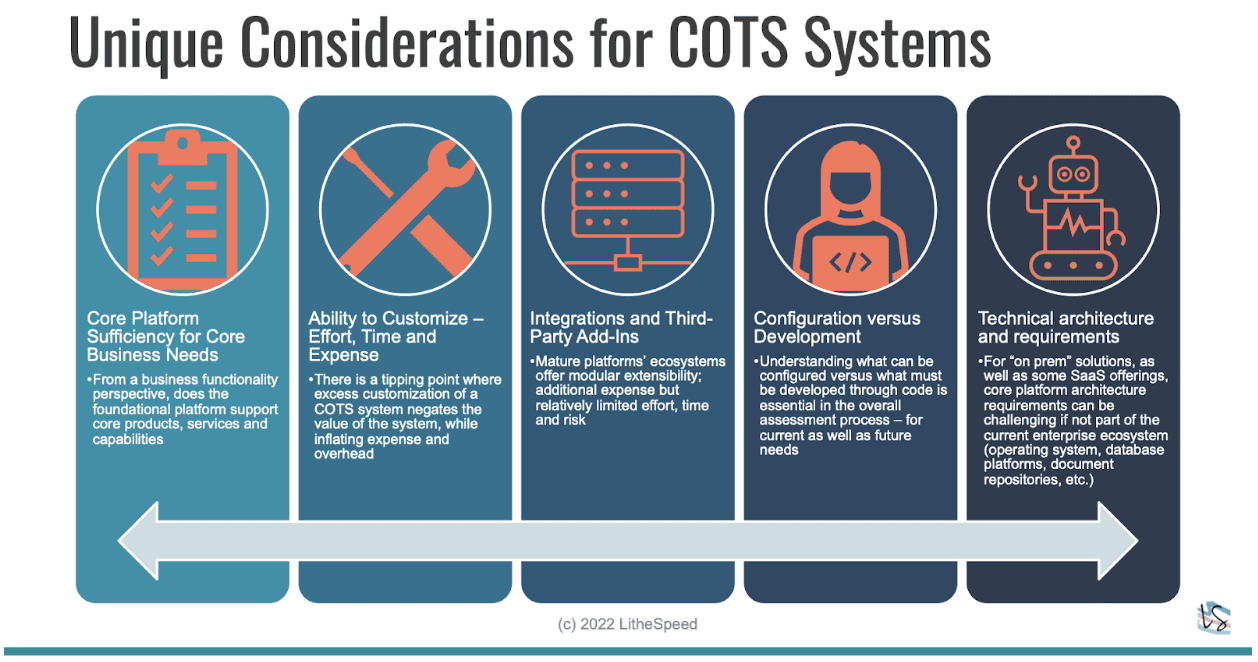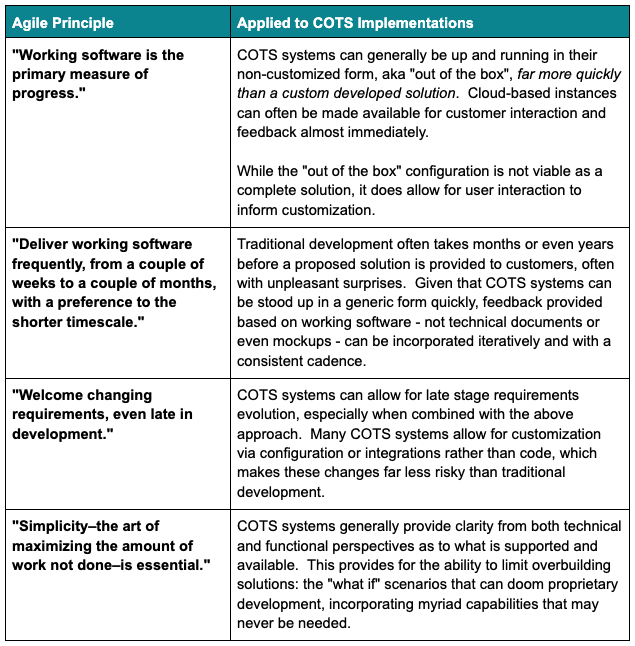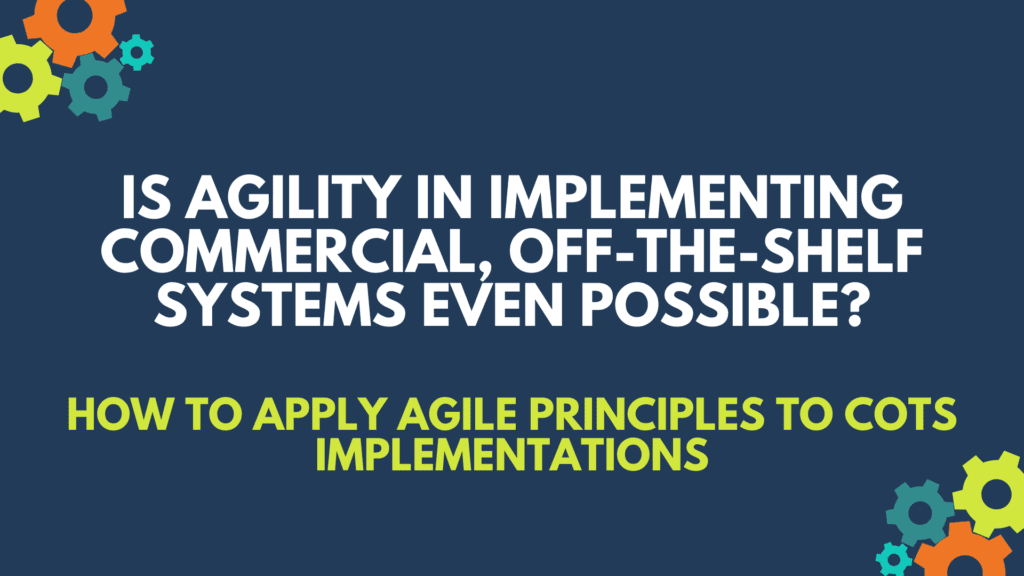Agile ways of working are now the default for many organizations, especially for software development teams. But there continues to be a debate as to whether agile approaches are practical, or even possible, when implementing large scale, highly customized enterprise systems, often referred to as “Commercial, Off-the-Shelf” or COTS for short.
These systems often require extensive analysis and planning efforts to implement. Add third-party authorized implementation partners and contractual complexities, and the idea of leveraging agile ways of working can seem daunting at best.
So must we revert back to waterfall approaches to work with these vendors, partners and systems?
From our experience, across many different platforms, vendors and industries, the short answer is a resounding “NO!” Assessing and implementing COTS can be fully aligned and handled in an agile fashion.
Below are key considerations to factor in when assessing vendor platforms, given the relatively limited ability to pivot as compared to developing a proprietary solution:

Once a vendor system has been selected, however, the process for implementing a COTS system can actually be more agile.
How so? Some ideas are below, aligned to agile principles and practices:

COTS systems are generally large and complex, enterprise-level solutions, and implementing them successfully is certainly not a trivial effort. But agile approaches, especially when combined with thoughtful initial assessments as to feature set and capabilities of the vendor and platform, not only can be leveraged, but provide more value and flexibility than traditional waterfall efforts.
If this post has piqued your interest as to how to approach your pending or current COTS implementation but aren’t sure what to do next, perhaps consider the following:
- If you’re in the analysis/vendor selection phase: ensure the vendor and platform meet your core business needs from both foundational technical and functional perspectives.
- Also in the analysis/vendor selection phase: verify empirical data from the vendor/partner for the amount of person-hours and calendar days required to get the base system up and running, as well as the same metrics for initial launch
- Collaborate with your vendor/partner to ensure their implementation approach is able to be launched in an “out of the box” form quickly, with functionality added iteratively.
- Understand which functionality can be configured by end-users or analysts versus what needs to be done via code – the former is far less expensive in both time and money.
- Build and align to an implementation plan that marries high-level scope and outcomes desired to iterative and incremental development, delivery and evolutionary detailed requirements.
- Start with a Minimum Viable Product (MVP) to get early feedback on the base or minimally-customized version of the platform.
To learn more, you may also wish to see our presentation on this topic here.
Of course, we at LitheSpeed welcome further dialogue with potential customers who are looking for experienced and expert Agile and Lean partners for their implementation efforts.
Please contact us here.

